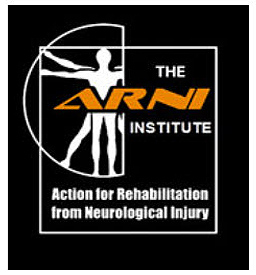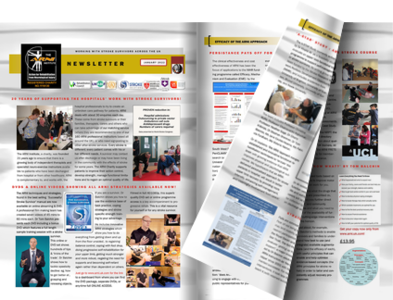You can’t recover well from stroke without getting stronger. It’s as simple as that. Dr Tom will show you exactly what to do and what not to. He shows you everything he has learned over the last 20 years – distilled into one DVD. You’ll be able to balance and walk better better, cope with a fall better, reduce spasticity in the elbow as well as hundreds of other benefits. Dr Tom concentrates on strength training. Copy him and become a super stroke survivor.
Exercises include:
The No-Weight Squat
Chair Squats
Horse Riding Stance Hold
Additional Weight Aids
The Double-handed One-Kettlebell Lift
How to Retrain Upper Body Strength
Knee Push-Up
Hands Elevated Push-Up
Revolving Push-Up Bars
Double Clamped and Complete Push-Up Training System
Hook Leg Push Up
Stick Floor Press
Medicine Ball Floor Press
Have you got your copy yet?
#strokerecovery #neuroplasticity #strokesurvivorscan #neurorehab #strokerehabilitation #strokeexercise #neurorehabilitation #exerciseafterstroke #strokerecoveryexercises
... See MoreSee Less
You must constantly challenge yourself in your everyday environment, whether that be one room or the train, the office, the car... wherever. I don’t care where; just do it.
If you need some help then call us on 0203 053 0111 or email suppory@arni.uk.com We have trainers throughout the country who can help you with your recovery.
www.arni.uk.com
#arnistrokerehab #ARNIstrokerehab #arnistrokecharity #neurorehab #arnistroke #strokerehabilitation #neuroplasticity #strokesurvivorscan #strokerecovery #strokesurvivors
... See MoreSee Less
Loss of arm function is a very common problem after stroke. A well-known feature that can creep in is called ‘learned non-use’, where the stroke survivor quickly gets very good at doing most reaching, grasping and releasing tasks with their less-affected, functional arm… ultimately him or her to forego efforts to improve the more-affected arm. Which is not good at all. Stroke survivors really want to know therefore whether intensive rehabilitation really does improve their upper limb motor control processes and reduce their impairments. And if it does, how should they go about getting this/doing it?
There is converging evidence that more therapy might result in better outcomes: current evidence suggests that intensive rehabilitation therapy helps people regain movement in their affected arm in the first few months after stroke. However, stroke survivors get to believe that little (if any) improvement can be made later on, which is sad, because we know this is not true.
Regaining lost movement may be possible many years after suffering a stroke, thanks to intensive rehabilitation therapy methods and inclusion of some principles, concepts and augments into rehab programmes. . With the right therapy combinations, people can see improvements in movement, everyday function, and quality of life.
www.arni.uk.com
#strokerecovery #strokerecoveryexercises #neuroplasticity #exerciseafterstroke #ARNIstrokerehab #neurorehabilitation #strokerehabilitation #strokeexercise #strokesurvivorscan #neurorehab
... See MoreSee Less
Have YOU got aphasia?
Approximately 40% of stroke survivors experience this difficulty: to comprehend or produce spoken or written language caused by a cerebrovascular accident. In half of these cases the language impairment still persists one year post-stroke. Aphasia has wide-ranging effects on the ability to function and quality of life of stroke survivors and easily leads to social isolation.
If you need help, ARNI SLT Telerehab can now help YOU, right now, wherever you are in the world!
The latest evidence shows clearly that you can conquer aphasia very successfully with the help of speech and language therapy.
And it also shows that SLT Telerehab is just as effective as in-person, face to face treatment.
We have a team of highly experienced low-cost specialist SLTs (all post-grads from Universities such as UCL, the University of Cape Town etc) who are available to help you right now, in your home, via Zoom. You get a one to one hourly service, based around your diary needs, from the comfort of your own home, with a highly experienced specialist speech and language therapist. Please enquire to arni.uk.com/get-remote-speech-language-help-now/ !
#aphasia #strokesurvivors #strokerecovery #strokerehabilitation #strokerehab #AphasiaAwareness #neurorehabilitation #arni #exerciseafterstroke #strokeexercise #strokerecoveryexercises #neuroplasticity #ARNIstrokerehab
www.arni.uk.com
... See MoreSee Less
This research indicates that acute exercise therapies, especially aerobic exercise and resistance training, can markedly enhance the motor function, cardiovascular health, neuroplasticity, and functional recovery in stroke survivors. Enhancements in strength, gait, balance, and endurance were frequently noted, accompanied by moderate impacts on quality of life and functional autonomy. Brain imaging outcomes related to neuroplasticity indicate that acute exercise can facilitate brain reconfiguration and enhance recovery. In general, acute exercise was determined to be safe and practicable, with few adverse outcomes.
Read more in the full article:
www.academia.edu/2994-435X/2/2/10.20935/AcadMed7769?article_card=download&source=academia-medicin...
www.arni.uk.com
#neuroplasticity #strokeexercise #strokesurvivorscan #strokerecovery #neurorehab #strokerehab #exerciseafterstroke #strokerecoveryexercises #neurorehabilitation
... See MoreSee Less
ARNI STROKE CHARITY NEEDS YOUR HELP! PLEASE DONATE JUST A FEW £ NOW TO HELP US ASSIST SURVIVORS - THANK YOU SO MUCH 😇! -
... See MoreSee Less
Here's a tip if you're faced with stairs that have no handrail/handrail on the wrong side.
Get the person with you to stand one step lower and put your hand on their shoulder for support while you take a step.
If you like this post then please share it with others. Each time that you share a post, you can directly help other people – as who knows which people in the world might find us and gain, either directly from the charity or simply by being able to copy an ‘innovative and useful’ move/trick of the trade that might help them manage after stroke.
Every time you share, you could directly help someone – as knowledge is power ;)
www.arni.uk.com
#neuroplasticity #strokerehabilitation #strokerecovery #arnistrokerehab #neurorehab #ARNIstrokerehab #stairsafterstroke
... See MoreSee Less
Did you know that incorporating higher-intensity walking into early stroke rehabilitation significantly improves patient outcomes, including mobility and quality of life? Here's a more detailed explanation:
Higher Intensity, Better Outcomes:
Research suggests that higher-intensity exercise, including walking, during the initial phase of stroke rehabilitation leads to better recovery outcomes.
"Walk 'n Watch" Protocol:
A specific protocol called "Walk 'n Watch" has been developed to increase the intensity of walking exercises in stroke rehabilitation.
Real-World Implementation:
This protocol has been successfully implemented in real-world rehabilitation settings, demonstrating its feasibility and effectiveness in improving patient mobility and quality of life.
Improved Mobility and Quality of Life:
Patients who participate in this higher-intensity walking program show improvements in walking distance, speed, and overall quality of life.
Increased Step Count:
A study found that stroke patients in inpatient rehabilitation following the implementation of high-intensity stepping training took significantly more steps per day compared to those receiving usual care.
Clinical Significance:
These improvements are not only statistically significant but also clinically meaningful, indicating a tangible difference in patients' ability to walk and perform daily activities.
www.arni.uk.com #strokerehabilitation #neurorehab #neuroplasticity #strokesurvivorscan #strokerecovery #strokeexercise #neurorehabilitation #strokerecoveryexercises #exerciseafterstroke
... See MoreSee Less


